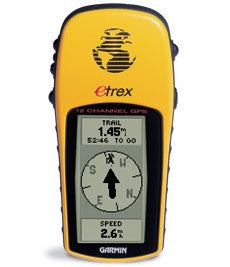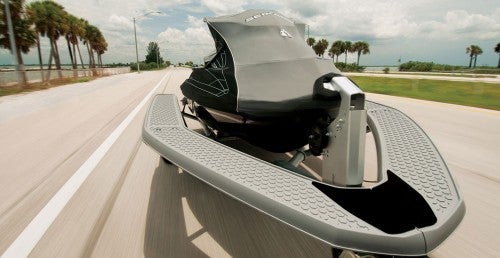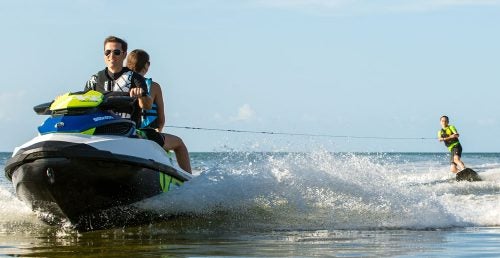How to Use a GPS Receiver
An ocean of possibilities for long-distance cruisers
There’s little doubt large, stable, and more rough-water friendly three-passenger PWC designs have contributed to the growth of long-distance PWC touring. But without question the other item that has made touring more realistic for the average rider is the handheld Global Positioning System (GPS) receiver. Once an elite tool of the high-tech military, GPS became available to the public in 1996. Today, inexpensive handheld receivers make the system available to nearly everyone.
GPS receivers work by receiving the signals sent by satellites orbiting above the earth. Latch on to the info provided by at least three, and the receiver is able to effectively place you on the map. Location is typically given in latitude/longitude coordinates, or a metric-based alternative, Universal Transverse Mercator (UTM). Most modern receivers make things easier by translating those coordinates into an easy-to-read format using preloaded maps and charts. Look at the screen and you’ll be able to see where you are, as well as what lies ahead.
 You can find a handheld waterproof GPS, like the eTrex H from Garmin, for as little as $100. If you’re looking for a unit with a color screen and more features you can spend hundres more.
You can find a handheld waterproof GPS, like the eTrex H from Garmin, for as little as $100. If you’re looking for a unit with a color screen and more features you can spend hundres more.Pinpointing your location is important to be sure, but navigating from that point is what makes a GPS receiver most useful. One way to do so is by entering a waypoint into the device, essentially the coordinates of a specific destination. These coordinates can be found on a chart or map, or shared by a friend. Once entered, the GPS receiver will provide simple compass-heading style navigation to the location in question.
The catch? Most routes aren’t in a straight line, but rather follow some twists and curves. That’s why most users will find it more useful to combine multiple waypoints into a saved route. An example would be to mark the location you launch from, and then add key reference points along the way, like where you might take a fork in a river or change direction at an island offshore, as well as your ultimate destination. Once that route is saved to your GPS unit, the receiver will point you in the right direction one leg of the journey at a time, pointing the way to your first waypoint, and then once there, showing the way to the next.
If you’re not the disciplined destination cruiser, but more the exploring type, a GPS can also help you navigate your way home. By using a receiver’s tracking feature, riders can meander waterways or play around offshore, then use the GPS unit to find their way back to home or the launch ramp. It’s like leaving a breadcrumb trail behind to retrace your path…except this one won’t wash away or become fish food.
While GPS receivers are great, the units have their limitations. First, they run on batteries. That means they can run out of power, or even fail from water intrusion. Spare batteries solve the first dilemma. The second reinforces the need to invest in a quality waterproof unit, as well as still have traditional charts and a compass when doing any serious traveling.
Overall, however, a handheld GPS receiver is one of the best tools to have at your disposal. Know how to use one and an ocean of possibilities awaits…literally.
Get PersonalWatercraft.com in your Inbox!
Like PersonalWatercraft.com on Facebook
Comments
Most Popular

2025 Yamaha JetBlaster PRO 2-Up Review

2024 Kawasaki Jet Ski STX 160X Review

Remembering the Sea-Doo XP

Whatever Happened to the Wetbike?

2025 Yamaha JetBlaster Review













 Your Privacy Choices
Your Privacy Choices